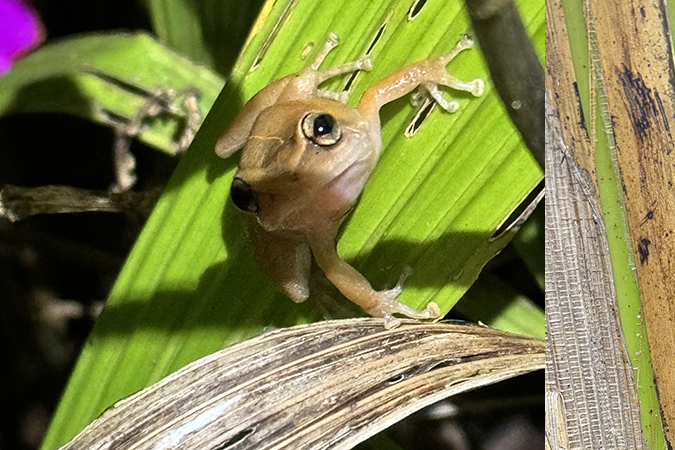The Coqui Frog:
An Invasive Species in Hawaiʻi
The coqui frog (Eleutherodactylus coqui) was accidentally introduced to Hawaiʻi from Puerto Rico around 1988. While their loud call is a major nuisance, these frogs also pose a significant threat to the state’s unique ecosystem.Aside from being a major noise nuisance, the frogs pose a threat to Hawai’i’s island ecosystem. Coqui frogs have a voracious appetite that puts Hawai’i’s unique insects and spiders at risk. They can also compete with endemic birds and other native fauna that rely on insects for food. The frogs are quite adaptable to the different ecological zones and elevations in the state and have been found from sea level to 4,000 feet elevation (at sites in Volcano on Hawai’i).

The coqui frog have become established and eradication efforts are no longer practical. The frogs are a major noise nuisance and also pose a threat to native eco-systems. Their diet includes insects and spiders and they compete with native birds and other endemic fauna. Since its detection in Hawai`i, significant efforts have been ongoing to prevent the spread of coqui to uninfected islands. Detection and control efforts of coqui in remote areas is difficult as they are heard mainly at night.
Physical Characteristics and Habits
- Color & Size: Coqui frogs are small, about the size of a U.S. quarter, and range from light brown to a dark color with varying patterns, often including a light stripe down their back. They grow up to 2 inches long.
- Origin: Native to Puerto Rico.
- Habits: During the day, coqui frogs remain hidden in leaf litter. At night, adult males emerge into trees, making their distinctive “ko-kee” call to attract females. Females lay their eggs in cuplike vegetation. The juvenile frogs hatch in 2-3 weeks, bypassing the tadpole stage. The male coqui frogs are the sole caretakers of egg clutches.

Eliminate frog-friendly habitats
Learn MoreControl Methods
- According to former DLNR Chair Suzanne Case, “The coqui is one of numerous invasive species that have impacted agricultural and forest lands across the state.” The DLNR supports inter-agency efforts to control and eradicate pests that endanger native plants, birds, and insects.
- Common methods for controlling coqui frogs include:
- Hand capture
- Spraying with citric acid or hot water
- Setting up PVC pipe or bamboo “refugia” lures
- Eliminating frog-friendly habitats

